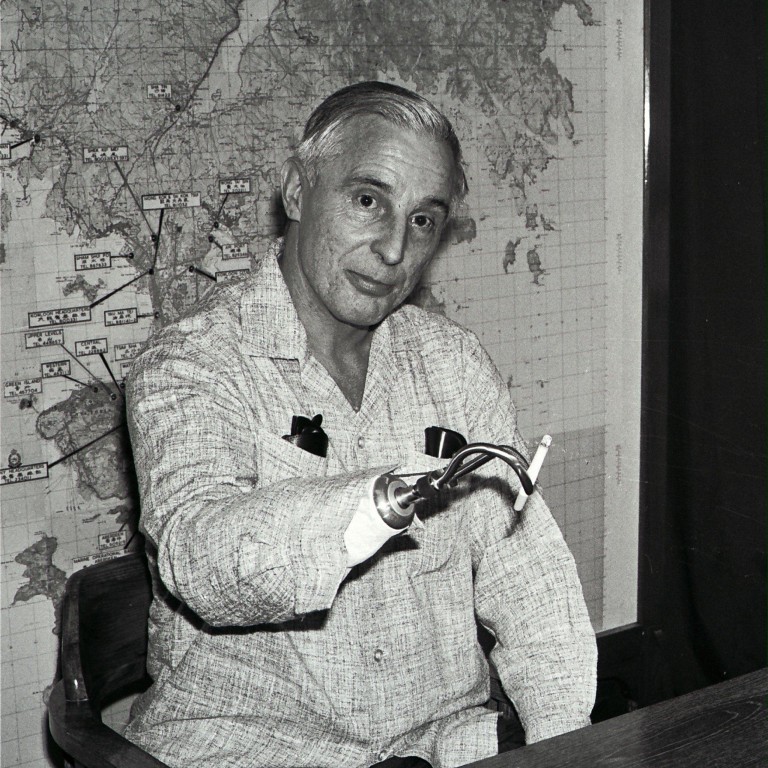
When Hong Kong bomb disposal expert ‘The Bomb Man’ had his hand blown off on the job
- Norman Hill was dismantling a home-made bomb on a government property in March 1971 when the device exploded
- A ‘living symbol’ during the dark days of the 1967 disturbances, Hill dismantled or detonated dozens of home-made bombs planted by dissidents
“A bomb was found inside a Government-operated car park in Kowloon yesterday,” reported the South China Morning Post on March 29, 1971. “This was the second bomb to be planted in two days on Government property.
“The one that was discovered outside the Government’s main offices in Lower Albert Road [on March 27] exploded while it was being dismantled by Mr Norman Hill, the ballistics expert.”
According to a March 28 Post report, “Staff photographer Benson Lo was only feet away when police ballistics officer Mr Norman Hill had his right hand blown off by a home-made bomb.”
In a column published in the Post on March 31, Sheila Wyndham found it “difficult to measure what Norman Hill has meant to Hongkong. He became a living symbol, back in those dark days in 1967, of the fact that Hongkong could handle itself in the face of challenge […]
The Hong Kong woman who ‘woke from the dead’ – after her funeral began
“No matter how deviously the bombers schemed, to blow apart the fabric of our society with their wanton packages of death, somehow Norman Hill seemed always to be one step ahead of them.”
According to a Post report that same day, “the bomb planters […] could get as much as 20 years’ imprisonment upon conviction.” However, no culprit was ever charged.

On April 15, the Post reported that Hill “has left Queen Mary Hospital. He is now resting at home.”
Four years later, on March 30, 1975, the Post reported that Hill, “who dismantled or detonated dozens of home-made bombs planted by dissidents throughout the Colony during the 1967 disturbances, will leave for Britain today on retirement.
“Known to many Chinese residents as ‘Cha Dan Yan’ (the bomb man), Mr Hill is retiring after 21 years of what his colleagues have described as ‘sterling service’.”
